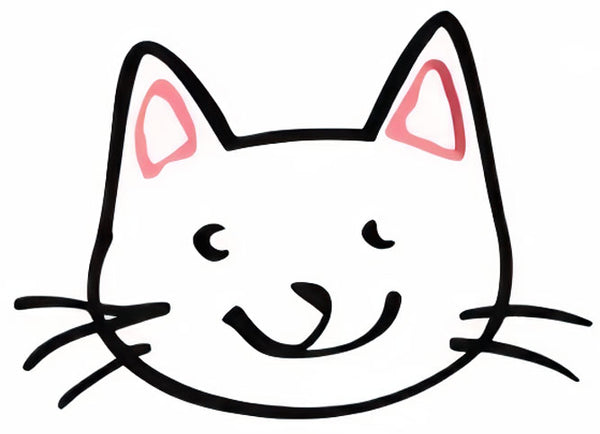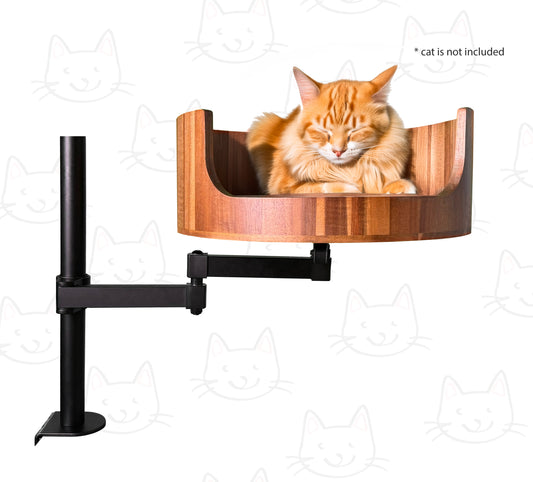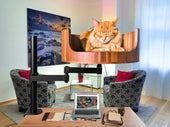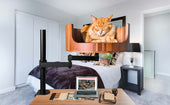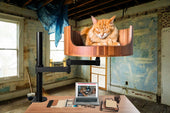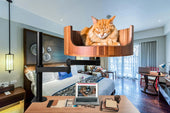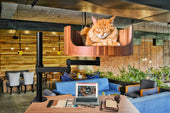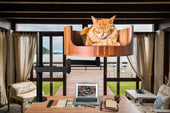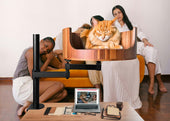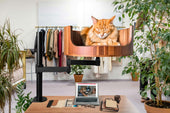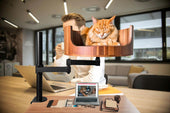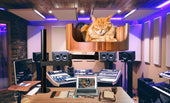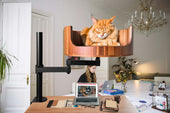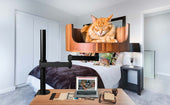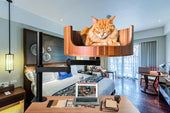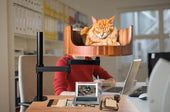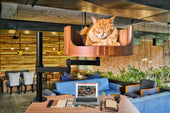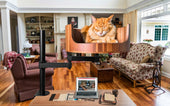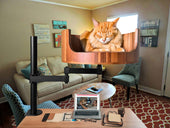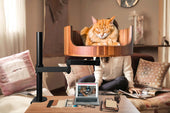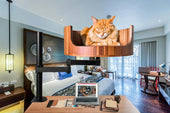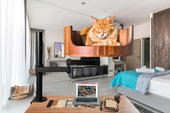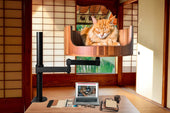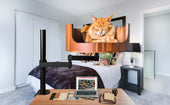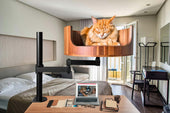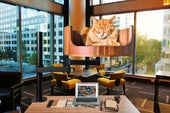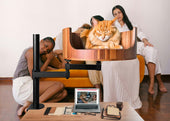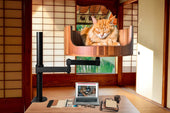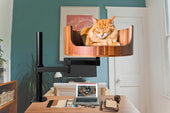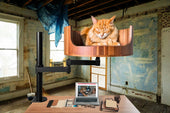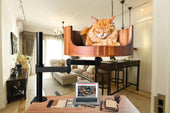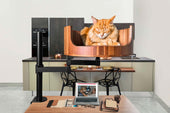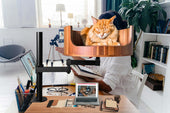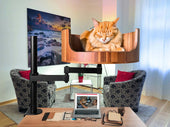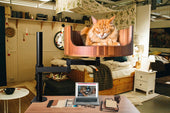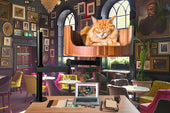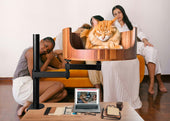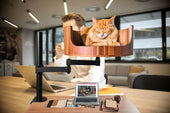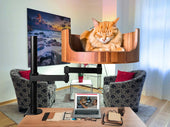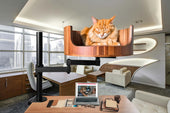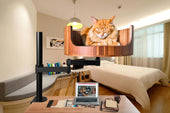
Male Cat Tail Quivering: Understanding Feline Behavior
Share
Male cat tail quivering is a common behavior that many cat owners may witness in their furry companions. Understanding feline behavior, especially when it comes to tail quivering, can help pet owners better communicate and bond with their male cats. In this article, we will delve into the reasons why male cats exhibit tail quivering, what it could potentially mean, and how to interpret and respond to this behavior.
Desk Cat Nest is a platform that aims to provide valuable insights and information for cat owners to better understand their pets. We will explore the various factors that may contribute to a male cat's tail quivering, such as emotions, communication, and physical health. By gaining a deeper understanding of this behavior, pet owners can ensure the well-being and happiness of their male feline companions. Join us as we unravel the mysteries behind male cat tail quivering and learn how to build a stronger relationship with your beloved pet.
1. Tail quivering in male cats is a common behavior that serves multiple purposes.
2. It can indicate excitement, frustration, fear, or anticipation of hunting.
3. Understanding the context in which tail quivering occurs is crucial for interpreting a male cat's emotions.
4. Tail quivering can be a form of communication with other cats and even their human companions.
5. Observing other body language cues along with tail quivering can provide deeper insights into a male cat's state of mind.
What is Tail Quivering?
Tail quivering or vibrating is a common behavior in male cats that can occur for various reasons. It is often seen when a male cat is feeling excited, anxious, or playful. Tail quivering can also be a sign of aggression or anticipation. Understanding the context in which the tail quivering is happening can help decipher what your male cat is trying to communicate.
Causes of Tail Quivering in Male Cats
There are several reasons why a male cat may exhibit tail quivering behavior. One common cause is arousal, such as when they are about to pounce on a toy or chase after a fly. In some cases, tail quivering can be a response to seeing another cat or animal outside the window. Male cats may also quiver their tails when they are feeling threatened or in a defensive posture. It is essential to consider the overall body language of the cat when trying to determine the cause of tail quivering.
Body Language Signals
Male cats use their tails as a way to communicate their feelings and intentions. Understanding the body language signals that accompany tail quivering can help interpret what the cat is trying to convey. For example, a cat with a quivering tail held high in the air may be feeling confident or excited, while a cat with a low, quivering tail may be feeling anxious or scared. It is essential to observe the cat's overall posture and behavior to get a complete picture of what they are trying to express.
When to be Concerned
While tail quivering is usually a normal behavior in male cats, there are times when it may indicate a more serious issue. If your cat's tail quivering is accompanied by other signs of distress, such as excessive meowing, aggression, or lethargy, it may be time to seek advice from a veterinarian. Additionally, if your cat's tail quivering is a new behavior that persists over an extended period, it may be worth investigating further to rule out any underlying health or behavioral issues.
Frequently Asked Questions
Is a Desk Cat Nest a good solution for male cat tail quivering?
While a Desk Cat Nest can provide a cozy space for your cat to relax and feel safe, it may not directly address the underlying cause of male cat tail quivering. It is always best to consult with a veterinarian to determine the root cause of this behavior and to discuss appropriate treatment options.
Can stress or anxiety be a factor in male cat tail quivering?
Yes, stress or anxiety can contribute to male cat tail quivering. Providing a comfortable and secure space, such as a Desk Cat Nest, for your cat to retreat to can help reduce stress levels and possibly alleviate the behavior. However, it is important to identify and address any sources of anxiety your cat may be experiencing.
How can I encourage my male cat to use a Desk Cat Nest?
Introducing your cat to a Desk Cat Nest can be done by placing treats or toys inside to entice them to explore and become comfortable with the new space. Additionally, adding familiar scents, such as a blanket or clothing with your scent, can help make the nest more inviting to your cat.
Are there any other products or techniques that can help with male cat tail quivering?
In addition to a Desk Cat Nest, there are other products such as calming pheromone diffusers or supplements that can help reduce stress and anxiety in cats. Behavioral modification techniques, such as play therapy or creating a consistent routine, can also be beneficial in addressing male cat tail quivering.
In conclusion, the Desk Cat Bed is a valuable choice for addressing male cat tail quivering. This cozy and comfortable bed provides a secure and relaxing environment for your cat, helping to reduce stress and anxiety which can contribute to tail quivering. The raised sides of the bed offer a sense of security for your pet, while the soft cushioning provides a warm and inviting spot for your cat to relax. By investing in a Desk Cat Bed, you are not only providing a comfortable resting place for your furry friend, but also taking proactive steps towards improving their overall well-being and reducing any unwanted tail quivering behavior.
